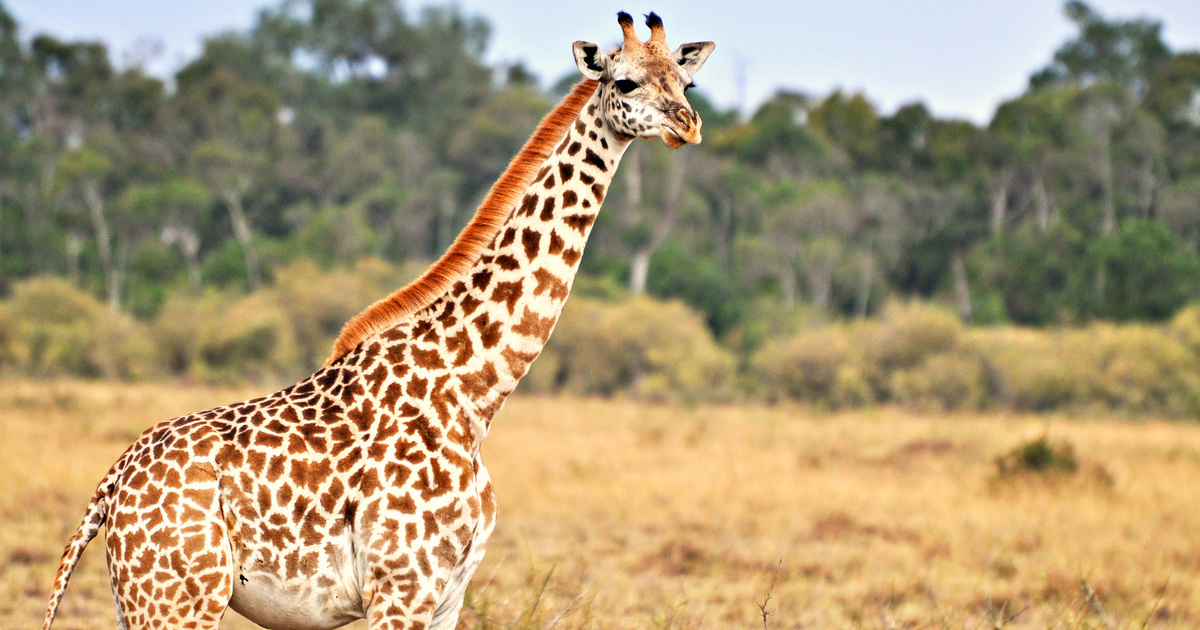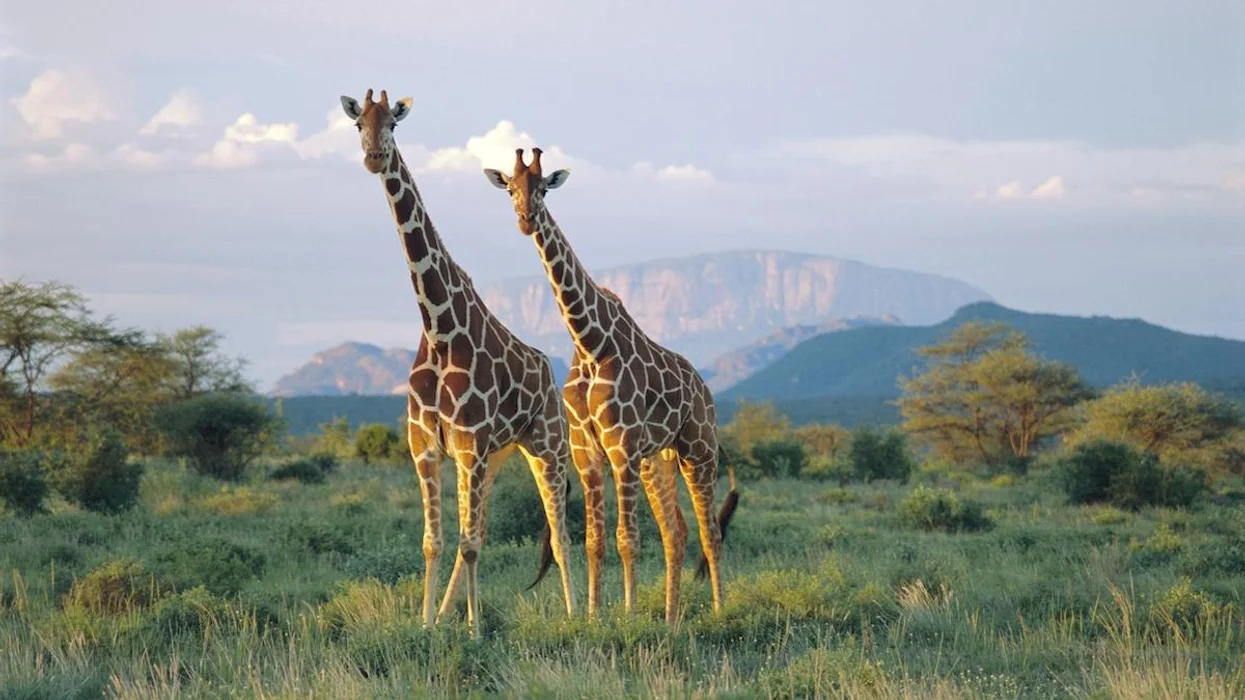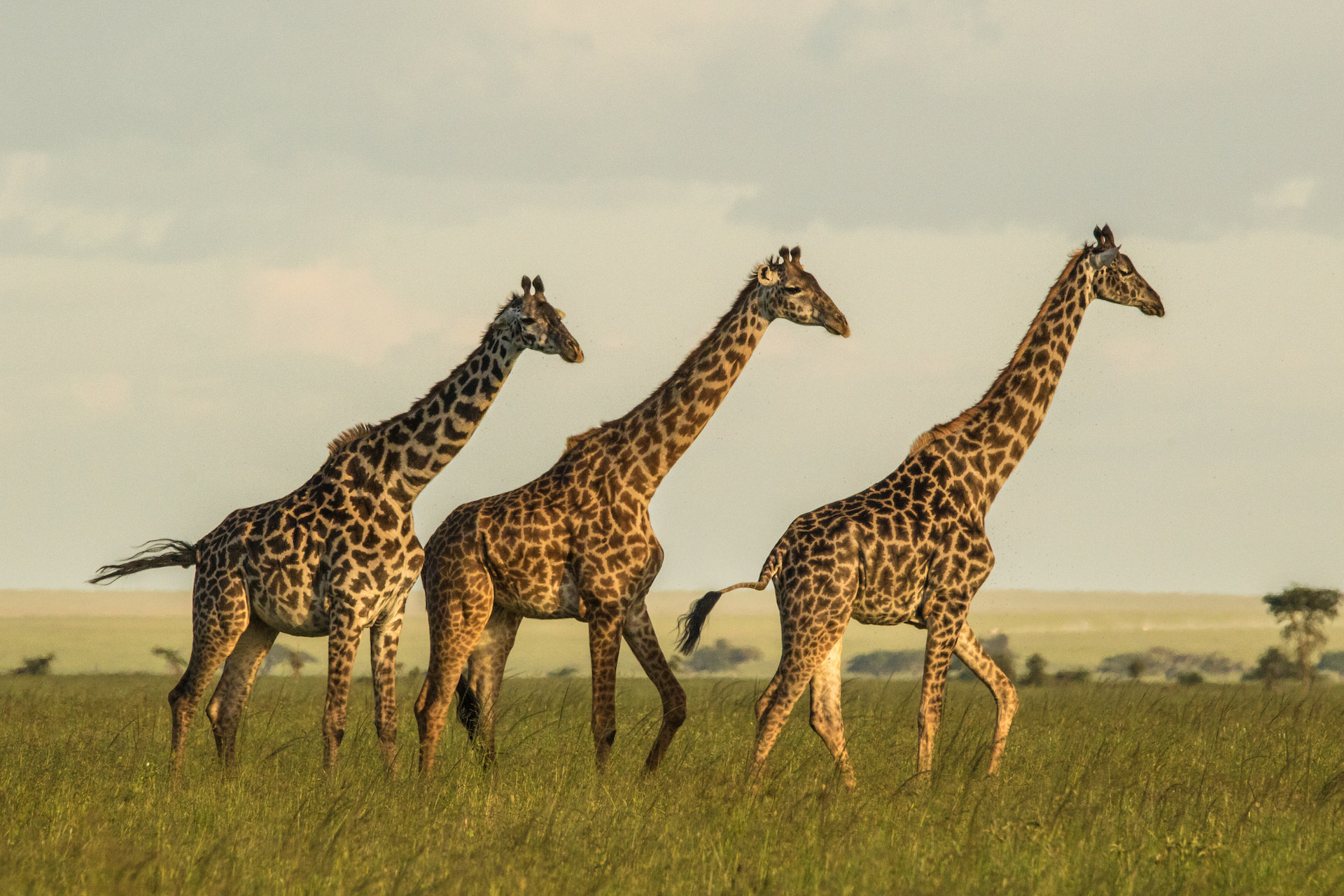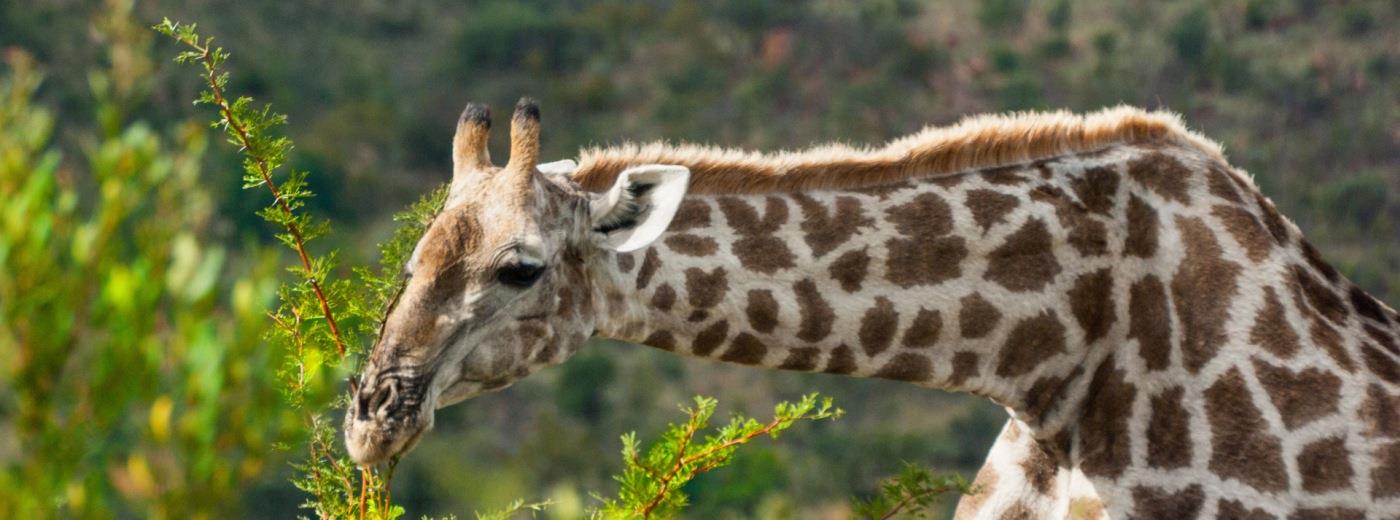STATUS
Critically Endangered


Giraffes are the world's tallest mammals, thanks to their towering legs and long necks. A giraffe's legs alone are taller than many humans-about 6 feet . These long legs allow giraffes to run as fast as 35 miles an hour over short distances and cruise comfortably at 10 miles an hour over longer distances.
Giraffes use their height to good advantage and browse on leaves and buds in treetops that few other animals can reach (acacias are a favorite). Even the giraffe's tongue is long! The 21-inch tongue helps them pluck tasty morsels from branches. Giraffes eat most of the time and, like cows, regurgitate food and chew it as cud. A giraffe eats hundreds of pounds of leaves each week and must travel miles to find enough food.
The giraffe's height also helps it to keep a sharp lookout for predators across the wide expanse of the African savanna.
The giraffe's stature can be a disadvantage as well-it is difficult and dangerous for a giraffe to drink at a water hole. To do so they must spread their legs and bend down in an awkward position that makes them vulnerable to predators like Africa's big cats. Giraffes only need to drink once every several days; they get most of their water from the luscious plants they eat.
Female giraffes give birth standing up. Their young endure a rather rude welcome into the world by falling more than 5 feet to the ground at birth. These infants can stand in half an hour and run with their mothers an incredible ten hours after birth.

STATUS
Critically Endangered

SCIENTIFIC NAME
Giraffa

POPULATION
110,000 left

LENGTH
up to 18 feet (5.5 m) tall

WEIGHT
weigh up to 3,000 lbs. (1,360 kg)

HABITAT
GRASSLANDS
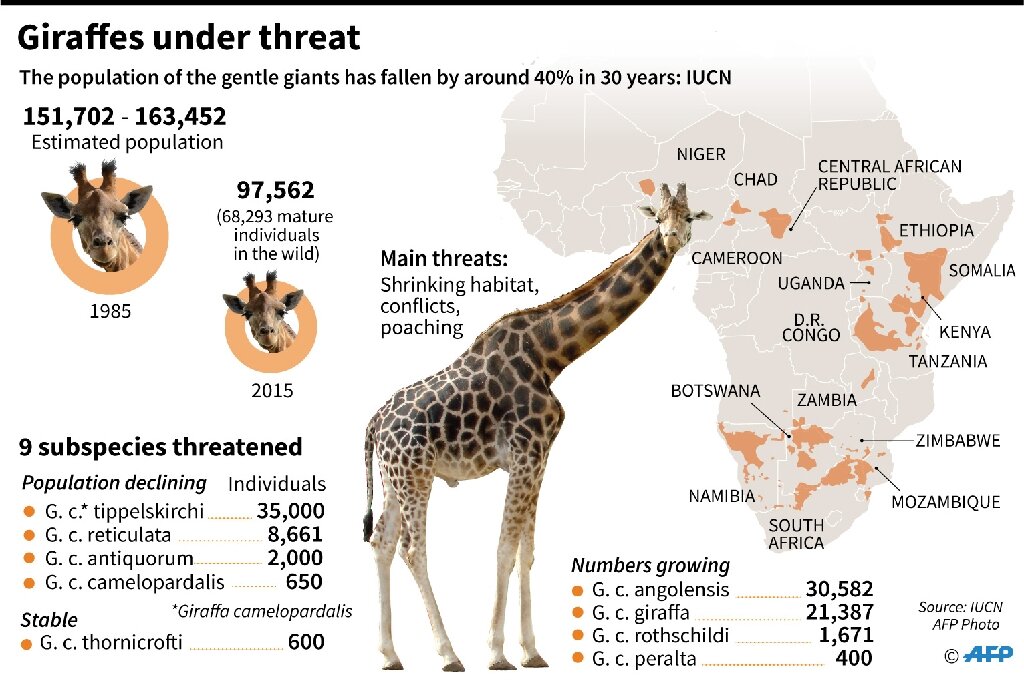
Giraffe's are vital to keeping ecosystems in balance. They eat the browse that others cannot reach, which promotes growth of forage and opens up areas for themselves
Giraffe's are the world's tallest living land animals - adult males can grow to around 5.5m.
Giraffes can reach a speed of 60km/hour at gallop over a short distance, and 50km/hour over a longer distance
A giraffe's neck has the same amount of vertebrae (seven) as the human neck, just with each one being up to 25cm long.
However, this iconic species faces the biggest threats to its survival due to habitat loss, human population growth, poaching, disease, war and civil unrest.
